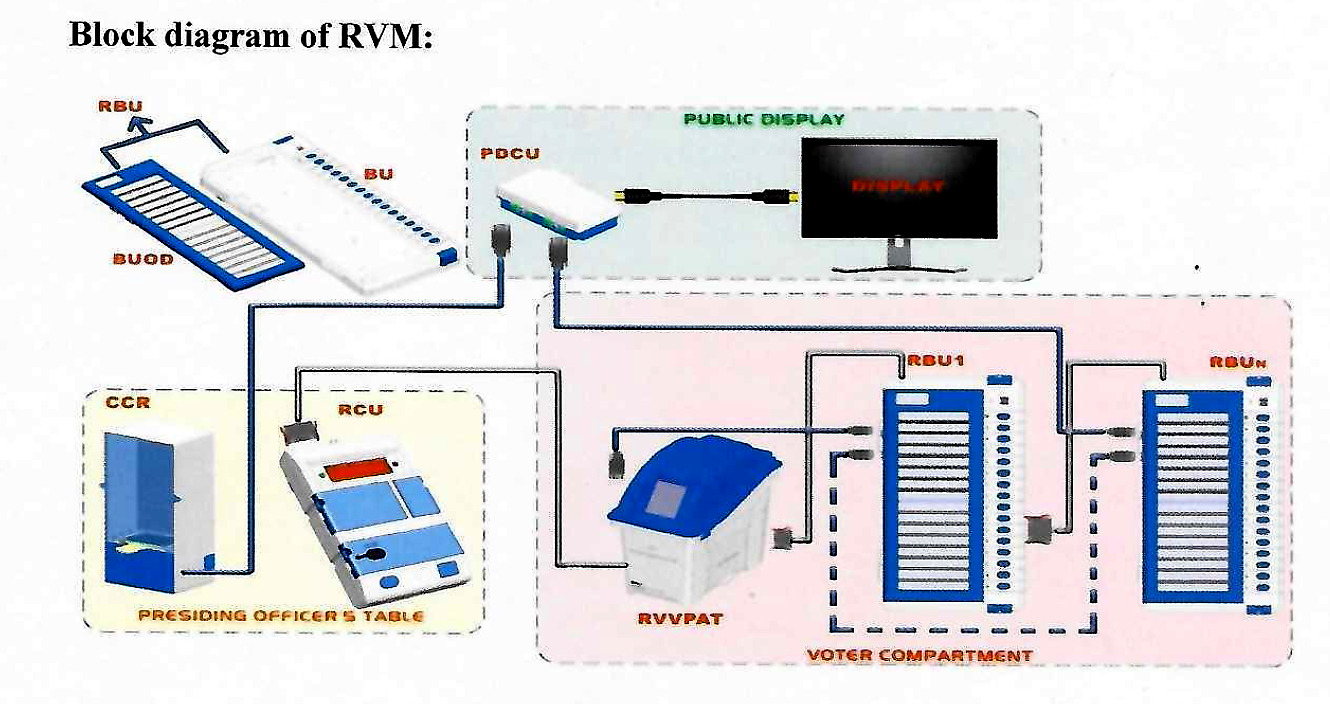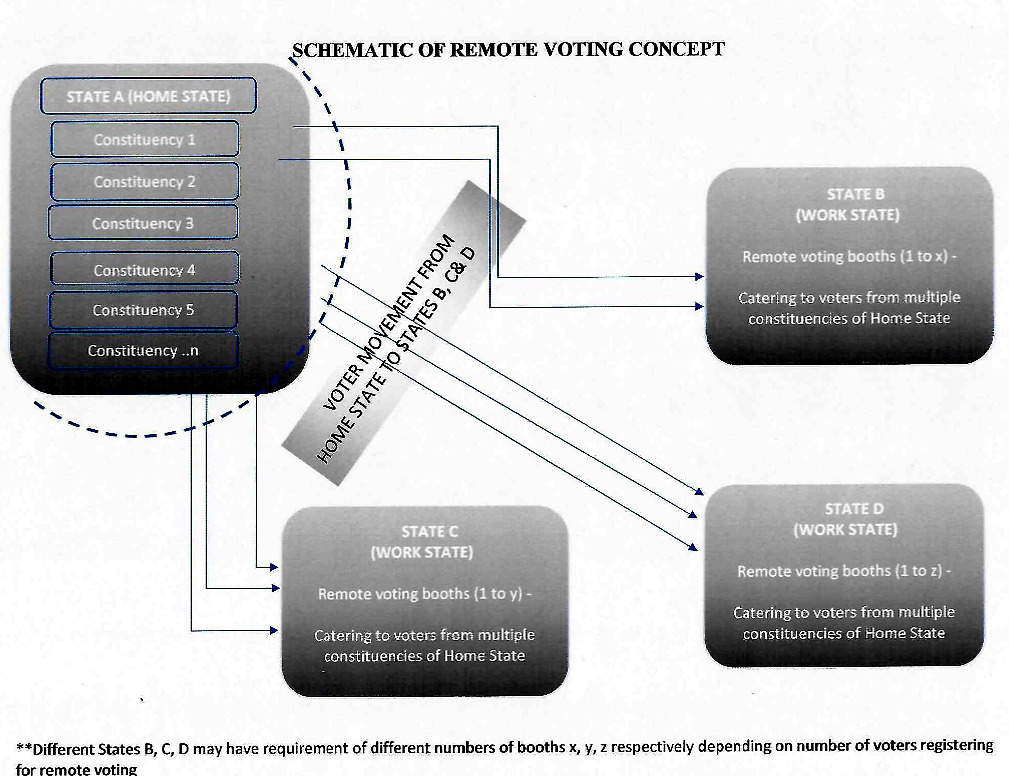
views
The Election Commission of India is now ready with a pilot for remote electronic voting machine, or remote EVM (RVM), for domestic migrants who will be enabled to cast their vote for their home constituency from remote locations. Amid low voter turnout in recently held elections, the poll body has said the inability to vote due to internal or domestic migration must be addressed on priority so as to improve voter turnout and ensure participative elections.
The modified form of EVM can handle up to 72 multiple constituencies from a single remote polling booth. The initiative, if implemented, can lead to a social transformation for migrants to help them connect with their roots. Many times, migrants are reluctant to enrol themselves at their place of work for reasons including unwillingness to get their name deleted from the electoral roll of their home constituencies as they cite it as permanent residence. This results in them missing out on exercising their right to vote.

While there is no central database available for migration within India, analysis of available data in public domain points to work, marriage and education as important components of domestic migration. Out-migration is predominant among the rural population in overall domestic migration, with around 85 percent internal migration within states.
“Migration based disenfranchisement is indeed not an option in the age of technological advancement. The voter turnout in the 2019 Lok Sabha elections was 67.4 percent and the Election Commission of India is concerned about the issue of over 30 crore electors not exercising their franchise and also differential voter turnout in various states/UTs,” the EC said.
How did the idea of remote voting come about?
Soon after assuming the office of the chief election commissioner, Rajiv Kumar’s firsthand learning of domestic migration issues – from his trek to Dumak village in Chamoli district – focused his attention on enabling migrant voters to exercise their franchise from their current place of residence.
Realising such empowerment will entail a host of legal, statutory, administrative and technological interventions, for which the ECI has deliberated at length to find inclusive solutions to facilitate electoral participation of migrants across all socioeconomic strata, and explored alternative voting methods.
With the objective of finding a technological solution that is credible, accessible and acceptable to all stakeholders, the poll body explored the option of using a modified version of the time-tested model of M3 EVMs to enable voting at remote polling stations – polling stations outside home constituencies – for domestic migrants. The migrant voter would then need not return to their home district to cast their vote.
What is RVM?
RVM is essentially a modified version of the existing EVM system. For facilitating participation of domestic migrants from remote locations so as to cast their vote for their home constituencies, the ECI is ready to pilot a multi-constituency RVM that contains: remote control unit, remote ballot unit, remote voter verified paper audit trail, constituency card reader, public display control unit, and remote symbol loading unit.
The ‘remote control unit’ records the total votes for each candidate in each constituency, as well as displays the total votes for each constituency, one by one, in sequential order of candidates. The results will be shared with the appropriate home returning officers (RO).

The RVM allows migrated voters to exercise their franchise in their home constituency from their current place of residence on the same day of polling. The remote voter has to pre-register for the facility by applying online/offline to their home constituency RO, within a pre-notified time before the elections.
Voter details will be verified at the home constituency and the request for remote voting will be approved after successful verification by marking them as remote voters. Special multi-constituency remote voting polling stations will be set up in places of current residence.
It is a standalone, non-networked system having the same security features as the existing Indian EVMs and provides the same voting experience to the voter as an EVM.
Why do we need RVM?
India is the world’s largest democracy. It has a vast population and, according to the ECI, despite an increase in electoral registration and voters, participation becoming stagnant is a major concern. One-third of the voters do not vote, as per the poll body.
“In other words, approximately one out of every three voters do not participate in the direct electoral process of exercising his or her vote. This translates to a high figure of about 30 crore voters,” it said.
According to the 2011 Census, 45.36 crore Indians (37 percent) in India are migrants – now settled in a place different from their previous residence. However, 75 percent of these migrations are on account of marriages and family-related reasons, followed by work-related and education-related migration. It is also to be noted that internal out migration is predominant among the rural population and is mostly intra-state.
The ECI has been working with two public sector units, who are manufacturing the existing EVMs – Bharat Electronic Limited (BEL) and Electronics Corporation of India Limited (ECIL) – to develop a robust, failproof and efficient standalone system for remote voting based on the existing EVMs, under the guidance of the technical expert committee.
The ECIL, under the department of atomic energy, has developed a prototype of multi-constituency remote EVM (RVM).
What lies ahead?
The ECI has invited all eight recognised national parties and 57 state political parties on January 16, 2023, to demonstrate the functioning of the multi-constituency prototype RVM. The EC has asked the parties to depute two representatives to take part in discussion and demonstration.
Members of the technical expert committee will also be present, while the poll body has solicited written views of the parties by January 31 on issues related to changes required in legislation, administrative procedures and voting method/RVM/technology, if any other, for domestic migrants.
Based on feedback received from various stakeholders and demonstration of the prototype, the ECI will carry forward the process of implementing the remote voting method.
Read all the Latest Explainers here


















Comments
0 comment